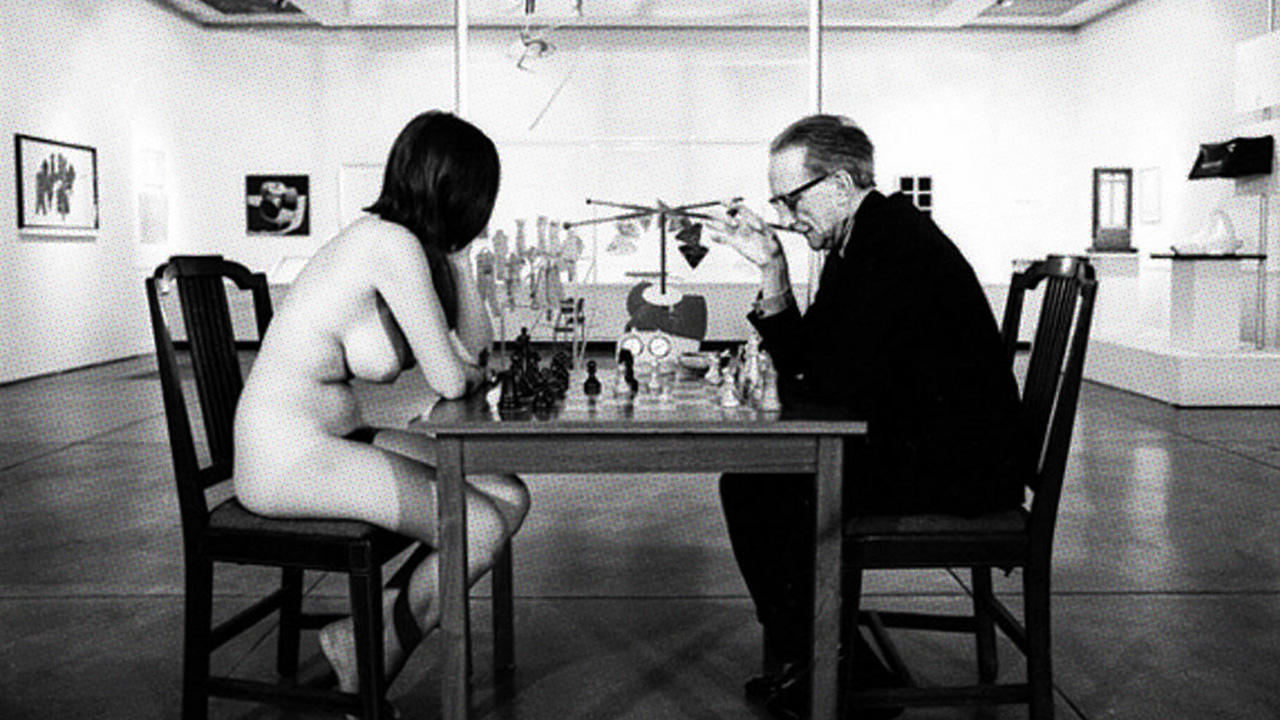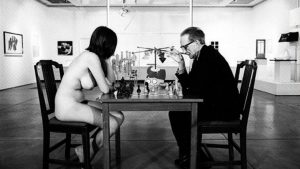Robert Buratti of Collective777, The Art Guild of OTO Australia recently posted some thoughts at the MysteriaMaximaMagazine.com site about the dilemma of the creative artist trying to follow their muse, produce vital work and also derive financial sustenance from it, considering the example of Marcel Duchamp. Have a read:
“Sooner or later at some point in the creative life of any individual, comes the decision as to whether they should or should not play the ‘game’. Engaging the political landscape of a creative scene can be destructive in many ways, and illuminating in as many others, but how important is it to engage with the social wasteland of the art or music scene these days?
Making art is not enough. Today artists are expected to continually promote themselves. It’s now fundamental to manage a plethora of social media accounts, rub shoulders with the cool crowd at the big shows and court this year’s young influentials at summer parties, but there have always been those who refuse to play the game – or reject it entirely.
“In 1923, rumours circulated that art history’s greatest disruptor, Marcel Duchamp had renounced art to devote his life to chess. “I am still a victim of chess,” he explained. “It has all the beauty of art, and much more. It cannot be commercialised. Chess is much purer than art in its social position.” Duchamp’s iconic take in art was always at odds with the avant-garde despite being mistaken for it along the way. Works like Nude Descending a Staircase (No. 2) scandalised the art world in 1913, and his ‘ready-mades’ such as Fountain, 1917 redefined what could be considered sculpture and what can be considered ‘art’ in general. But from 1918, as the art world took its first steps toward a financial boom, Duchamp began his retreat from the scene. He declared that painting itself was bankrupt, saying “I never had the enthusiasm of a professional painter. With me it was the idea that counted more.”
“He labelled the avant-garde scene as “a basket of crabs” and refused to have any further contact with the mechanisms and socio-political nature of the art world. He did however continue to make art, but only in private and never for public view. In a small room in Greenwich Village, known only to he and his wife, he toiled on a single work, his masterpiece Étant donnés, for 20 years.
While Duchamp was one of the first in popular memory, he was by no means the last to reject the notion that an artist must be part of a scene to be successful. After assailing the heights of the international art world, the Italian artist Maurizio Cattelan walked away from everything in 2011. When announcing his retirement, he said “You ever feel tired and want to change occupations? If you were in a band, you might feel you start to repeat yourself.” His art was becoming restricted by the expectations of the art world and the pressure to continually raise the next bar in his career progression.
“Perhaps the best way to traverse the creative scene is to simply not engage with it at all. As Duchamp suggested, ideas are the most important thing, and these come to fruition regardless of an artist’s adoption of a scene or community. If someone engages the scene for its own sake, then they have no business being an artist. In the old days of the art world, the role of a gallery or dealer was in part, to insulate their artists from the political difficulties of the art world, and to leverage it to generate commercial opportunities for them. Most artists no longer feel that they require a dealer or agent, and as a result leave themselves to the lions of industry alone. Sadly most don’t have the training or courage for the gladiatorial dance that follows. The age of the ‘creative entrepreneur’ heralded by critics a decade ago demands that business is now part of the artistic consciousness, and even Andy Warhol claimed that “Business is the best art” but no art schools offer any art business education to the many thousands who leave their degrees without any opportunity of employment. Many do however offer workshops on how to build more followers on Instagram.
“It could be argued that the local art scene is created and driven as a function of approach. As can be confirmed by the regular ‘pop-up’ showings of forgettable paintings in even more forgettable gallery spaces, it’s getting harder to see any work which is being created from the power of ideas rather than simply the desire to be famous.
At least Duchamp saw it coming.”
Find more engaging content here: http://mysteriamaximamagazine.com/play-game-not-play-game/.


